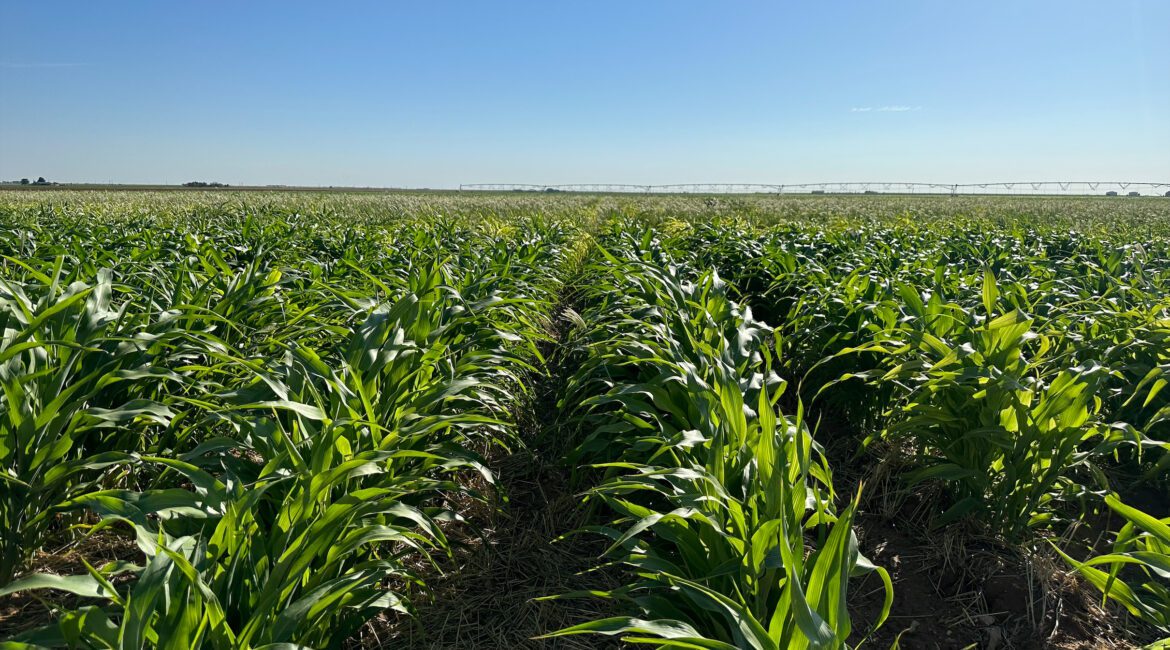Why Inspections Matter and How to Prepare
As the growing season progresses, an annual crop inspection is a pivotal moment that underscores the partnership between you and your ag lender. This step offers an opportunity to gain valuable insights, align expectations, and strengthen the connections that drive your operation.
“Crop inspections create an opportunity to spend one-on-one time between the lender and the grower,” states Matt Manuel, Conterra relationship manager for Texas and the South. “Inspections provide a time to gain insight into the overall thought process to running the specific operation. There’s no better time to have those talks than while driving around your property.”
Why Crop Inspections Matter
Crop inspections are not just routine tasks – they’re a bridge that connects your financial goals with the reality on the ground. They offer a chance to discuss the progress of your operation, address any challenges you might be facing, and align your strategies with the prevailing conditions. These insights empower your ag lender to provide guidance tailored to your specific needs, ultimately contributing to your farm’s long-term success.
What to Expect During a Crop Inspection
A crop inspection involves more than just a physical assessment of your fields. It’s an opportunity for you and your lender to engage in meaningful conversations, exchange insights, and ensure that your operation is on the right track. In the days leading up to the physical inspection, in-depth conversations can help you run through maps, set quality expectations for the overall crop, and even discuss potential insurance payouts if unforeseen weather events impact your yield.
Preparing for Your Annual Crop Inspection
1. Review Your Operation: Take some time to evaluate your operation’s progress, challenges, and successes since the last inspection. Prepare any data or documentation that reflects your farm’s current state.
2. Engage in Conversations: As Matt Manuel suggests, initiate conversations with your lenders before the inspection. Discuss your observations, concerns, and any changes that have occurred since the last visit.
3. Share Insights and Goals: Communicate your insights into the crop’s condition, highlighting any successes and addressing challenges. Be open about your goals and any adjustments you’re making to achieve them.
4. Prepare Documentation: Have relevant documents ready, such as field maps, financial statements, and production records. These materials provide a comprehensive view of your operations and facilitate informed discussions.
5. Weather Impact and Insurance: If your crop has been affected by weather events, be prepared to discuss potential insurance payouts and the impact on your overall financial picture.
6. Assess Business Strategy: Talk about your business strategy and how you’re aligning it with your operational practices. Share your plans for improving efficiency, reducing risk, and enhancing profitability.
7. Tour the Fields Together: During the physical inspection, tour your fields with your lender. This firsthand experience allows them to assess the crop’s condition and gain a deeper understanding of your operation’s reality.
“The conversations you have with your lender as you tour your fields are as important as the financial materials you provide,” Matt Manuel concludes. “It benefits both parties to have in-person talks about what’s working for the operation, what needs improvement, and what the plans are for the future. I appreciate being able to talk with my clients while on their land, listening to both the plans for their operation and the history of what has come before.”
Your annual crop inspection is more than an obligatory task – it’s a valuable opportunity to collaborate, align goals, and build a stronger partnership with your ag lender. Utilize this time to gain insights, receive guidance, and ensure your operation’s potential is maximized.
Conterra Ag Capital focuses exclusively on agriculture, providing traditional farm and ranch loans, development and alternative lending to America’s farmers, ranchers, and agribusiness. With regional lending experts such as Matt Manuel, Conterra has flexible ag loan options available to meet the needs of producers.
Disclaimer: Please note that the information provided in this article is for educational and informational purposes only, and should not be construed as financial or investment advice. While we have made every effort to ensure the accuracy and reliability of the information presented, Conterra Ag Capital and its affiliates make no representation or warranty as to the completeness, correctness, timeliness, suitability, or validity of any information contained in this article. You should always consult a qualified financial advisor, tax professional, or other qualified professional for advice on your specific financial situation.





